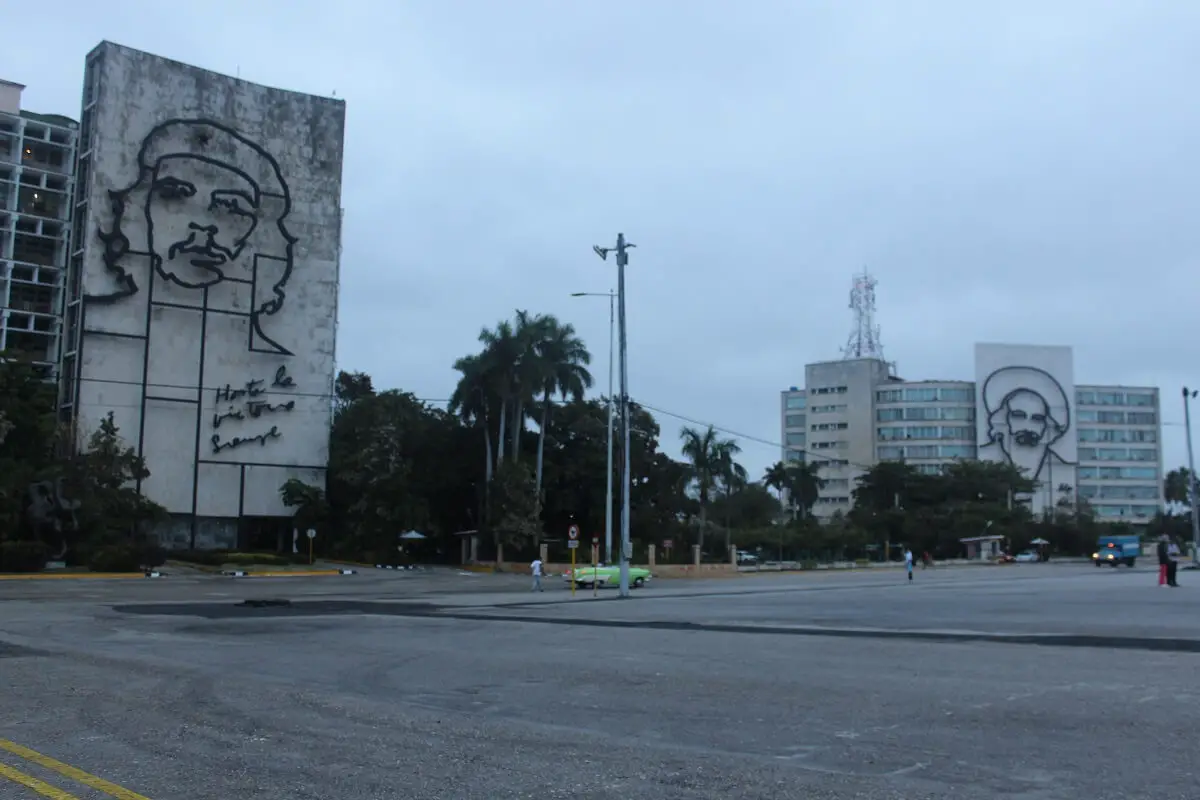
In the previous post I wrote about red tourism and its relation to communism. It was first developed and researched in China, as a method to awake nostalgia and respect feelings for communist heroes and leaders and love for the country. But it soon crossed borders. Communist ruins, tangible and intangible heritage, with social, historic or cultural value can now be seen in many more countries that experienced or still experience this political regime. Here are some of the best sights around the world that can help you understand communism better.
Red tourism and communism in Asia
Tiananmen Square, Beijing, China
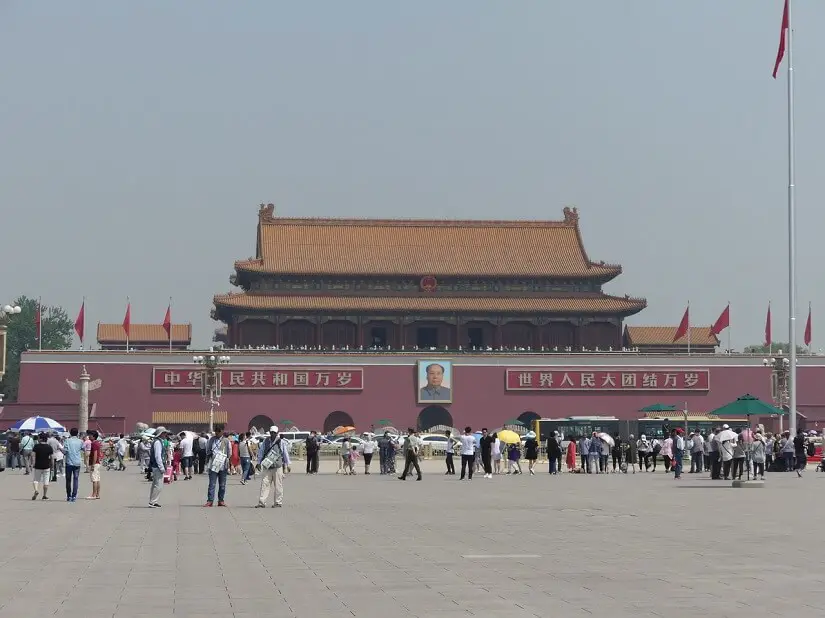
Tiananmen Square is located in the heart of Beijing and has a complicated and problematic history. It is probably most famous for the 1989 protests which ended in terrible bloodshed. The square is also called the gate of heavenly peace and has become a popular tourist attraction. Nearby you’ll also find the Mausoleum of Mao Zedong which is another incredible example of a communist tourist attraction in Beijing. Tiananmen Square is actually one of the largest city squares in the world and a more than impressive sight.
Make sure to visit in the morning or afternoon to avoid the worst of the heat. Pack your camera because this is one of the most famous places in all of Beijing. The square is surrounded by a number of attractions such as the National Museum of China, the Great Hall of the People and of course the Chairman Mao Memorial Hall. Be aware that the Memorial Hall and Mausoleum are only open from 7:00 am to 11:00 am so you need to come early in the morning. Entry is free but visitors cannot bring cameras and need to be respectful as they are visiting a site of great significance.
Explored by Victoria from Guide Your Travel
Ho Chi Minh’s mausoleum and Stilt House, Hanoi, Vietnam
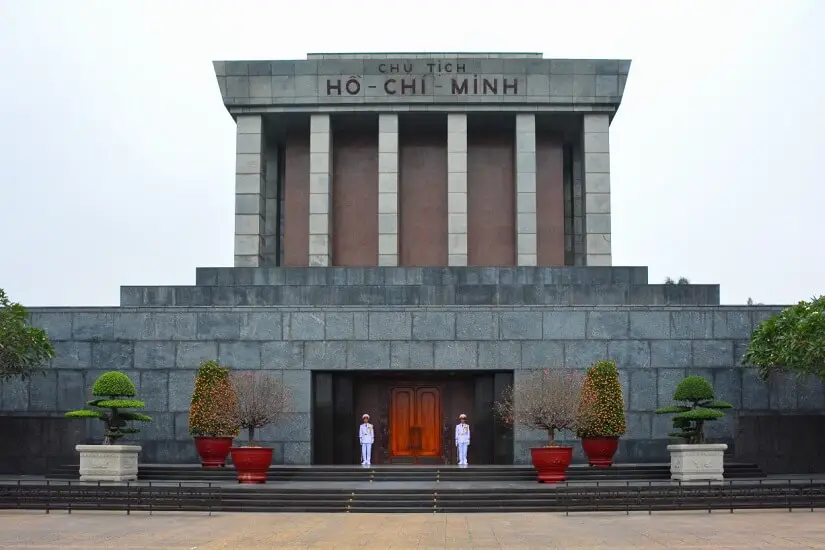
Ho Chi Minh’s grey granite mausoleum, inspired by the Moscow Lenin Mausoleum stands on the Ba Dinh Square in Hanoi, where the Communist leader declared independence and proclaimed the Democratic Republic of Vietnam on 2nd September 1945. Many Vietnamese see him as their “second father.” and consider it an honor to visit the mausoleum. Since the end of the war, his image as a self-sacrificing patriot has been propagated in Vietnam.
The expert of Lenin’s corpse came to assist with the embalmment of the Great Leader’s body. Since then, the corpse is transported to Moscow for two months every October-November. Guards protect the embalmed body of Uncle Ho that is in the central cooled part of the mausoleum.
Visitors must show respect with appropriate dressing and behavior. Skirts, tank tops, and hats are not allowed. Visitors should remain silent and avoid putting their hands into the pocket or having chewing gum. They have to walk slowly and stand in the line. Before entering the mausoleum, they have to deposit their backpacks, camera, and mobile phone. Food and drinks are also not allowed. The entrance is free of cost. Children under three years cannot enter the mausoleum.
Opening hours: Tuesday – Thursday 07:30 – 10:30, Saturday – Sunday 07:30 – 11:00
The Stilt House
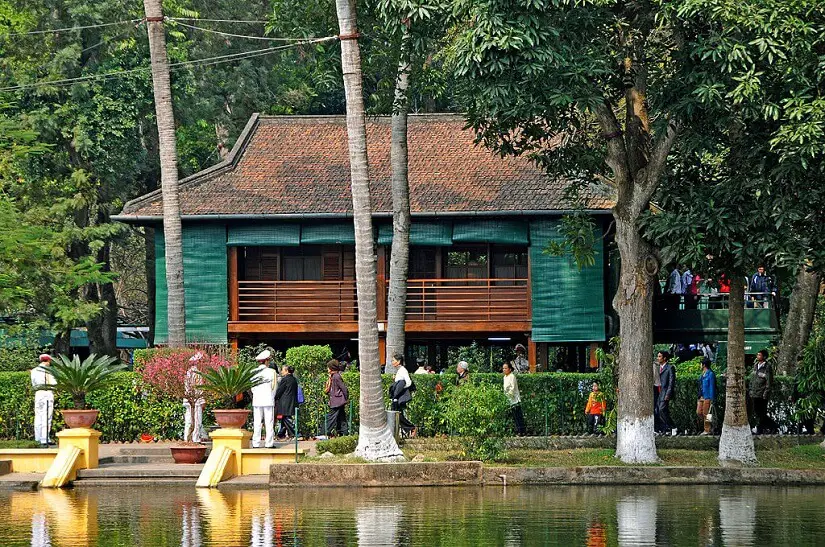
They say that Ho Chi Minh refused to live in Indochina’s governor palace when Vietnam gained independence from the French in 1954. Instead, he stayed in a traditional Vietnamese pile house with a fishpond, where he also received the journalists and foreign politicians. The small garden chalet was no different from the home of an average Vietnamese intellectual family. He held his official political discussions with the head of states at the table between the piles of the building. He was the so-called “head of state without a palace.” The entrance fee is around 1 USD.
Opening hours: 7:30 – 11:00 AM and 1:30 – 4:00 PM every day.
Explored by Agnes from Voice of Guides
Cu Chi Tunnels, Vietnam
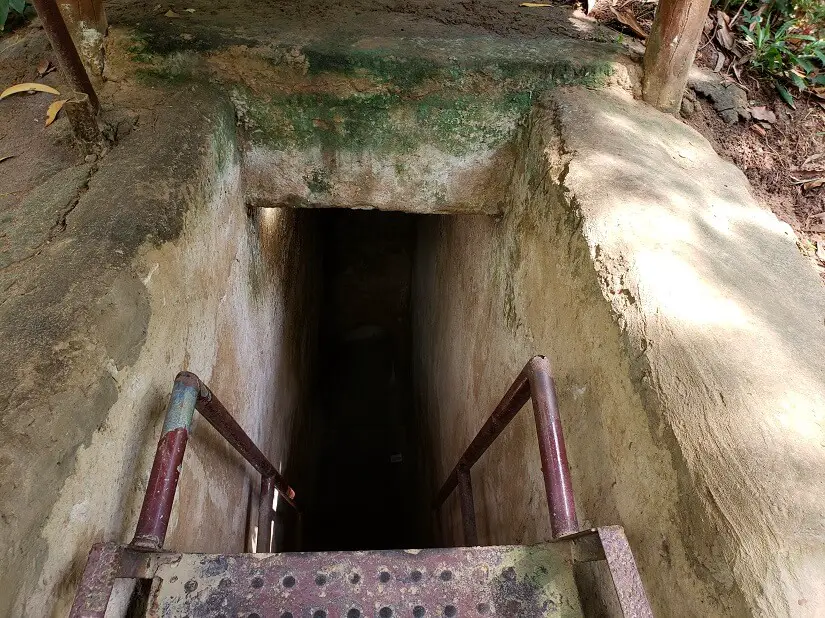
Vietnam’s Cu Chi Tunnels are a short distance from Ho Chi Minh City and most of the half-day tours include round-trip transfers. Built by the Viet Cong communist troop, the tunnels were used extensively during the Vietnam War with the US. A snapshot of the thousands of miles of tunnels in the area, the Cu Chi Tunnels are now a popular tourist site showing how they were used and what life was like for the soldiers.
Exploration of the heritage site starts with a communist propaganda video detailing how idyllic life in Vietnam changed as the war began. But if you push past this, the tour is very interesting. Plan your tour earlier in the day when the heat is more bearable, especially if you want to test your tunneling skills in some tight spaces.
One of the more unique parts of the tour involves demonstrations of common booby traps set by the soldiers. You can only imagine how many serious injuries or deaths occurred because of stepping on one of these. For an additional fee you can shoot an AK-47. Or wait while others do at the concession area with snacks for purchase opposite. This is the only place to relax eating an ice-cream to the noise of rapid gunfire.
Some aspects of the Cu Chi Tunnels heritage site are difficult to digest as you learn of the gruesome deaths of fighters from both sides. But this is one tour that should be on your list if you visit.
Explored by Emma from Forever Lost In Travel
Tuol Sleng Museum, Cambodia
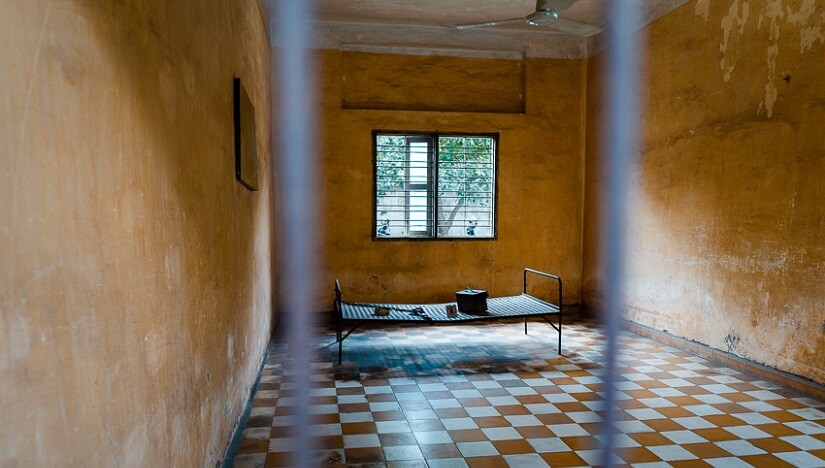
Cambodia’s history is marred by arguably the most brutal communist regime in history, the Khmer Rouge. The Khmer Rouge, led by Pol Pot, systemically purged 25% of the country’s population. This resulted in the death of 1.5 – 2 million Cambodians, most of which were killed for reasons such as literacy, race, religion, and political affiliation.
Opponents to the regime were identified and taken from their homes to interrogation camps around the country where they were tortured until they died or they confessed to fictional crimes. After which, they were transported to ‘Killing Fields’ where they were brutally executed.
Tuol Sleng Museum is one of these interrogation camps, preserved to this day as a memorial to the Cambodians who lost their lives during this period. Tuol Sleng is now one of the most popular attractions in Phnom Penh and is an important part of experiencing Cambodia.
Originally a highschool, Tuol Sleng was converted into S-21 Prison where over 18,000 Cambodians were detained and tortured. Today, tourists can walk the halls of the school and see the different devices used and living conditions some of the prisoners experienced whilst living in the classrooms.
The best way to get the most out of the experience is to take the audio walking tour around the museum which explains some of Cambodia’s dark history and includes interviews of some of the 12 survivors.
The museum is open every day from 8 until 5 and entry costs $8USD including the audio tour.
Explored by Delilah from Our Travel Mix
DMZ between South and North Korea
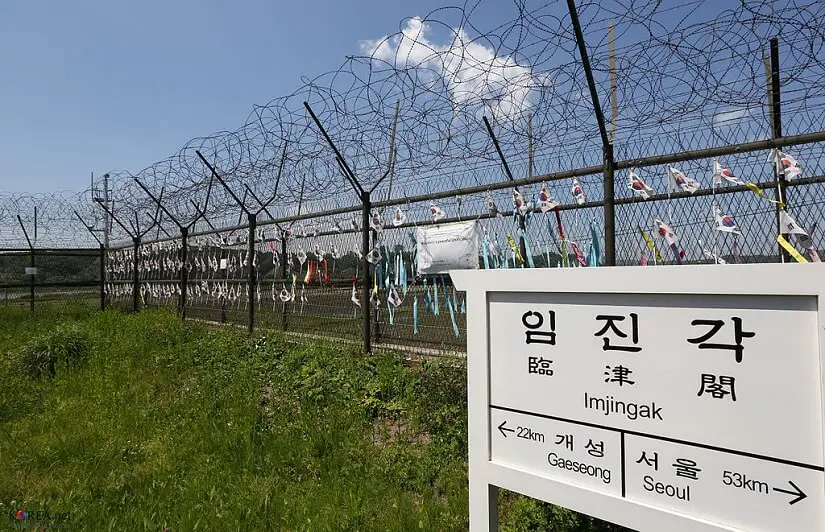
Separating South Korea from the North is a 4-km-wide belt called the Korean Demilitarized Zone (DMZ) that runs across the Korean peninsula. Although often described as the most hostile place on Earth, this cease-fire line is actually open for visitors, offering a good opportunity to learn about the Korean War and its aftermath, which is still plaguing them to this day.
You can visit the DMZ from either the South Korean side or the North Korean. Either way, you cannot go independently. All visitors must go with an organized tour, accompanied by military escorts.
The half-day tour from Seoul will take you to Imjingak Park (the furthest north that South Korean civilians are allowed to go), the Bridge of Freedom (across which war prisoners were released after the war ended in 1953), the Third Tunnel (a tunnel dug by North Koreans in an attempt to infiltrate Seoul), Dorasan Station (the last railway station before the border), and Dora Observatory, where you can use high-powered telescopes to get a glimpse into the world’s most closed country.
In the middle of the Military Demarcation Line is a Joint Security Area (JSA), also known as the “Truce Village”, where all diplomatic negotiations between the two nations take place. This is the only place where one can safely cross the Demarcation Line. To visit the JSA, you will have to take a full-day tour.
Explored by Ummi from UmmiGoesWhere
Manzushir Monastery, Mongolia

Manzushir Monastery in Mongolia was once a place of pilgrimage. It was first established by the sainted Lama, Luvsanjambaldanzan, in 1733 and at its peak it had around three-hundred residential monks, twenty temples, and was the home of many rare Buddhist scriptures.
Its downfall came during the Soviet Era, a dangerous time for religion and culture in Mongolia. Prior to becoming a Democratic country in 1990, Mongolia was a satellite of the Soviet Union. Between 1936-1938, an extension of the Stalinist Purges swept across Mongolia with a mission to stamp out Buddhism and culture. During this period, over 18,000 monks across Mongolia were killed and seven-hundred monasteries were destroyed.
In 1936, twenty-four lamas were arrested from the Manzushir Monastery. In 1937, all twenty of the temples were destroyed. After this, the remaining fifty-three lamas, aged between fifty to sixty, were exiled. Unfortunately, many of them were later shot.
Now you can visit the ruins of this significant Buddhist site. You can explore the crumbling ruins of the Togchin Temple and walk among the retaining walls and terraces where the other temples once stood.
You can find Manzushir Monastery tucked into the end of a tranquil green valley, 8 kilometers (4.9 miles) north of the town of Zuunmod, Mongolia, in one of the world’s oldest nature reserves. It is best to visit in summer as it’s a great place to take a picnic and enjoy nature. National Park entrance is 3000 Tugrik (USD$1.06), and it is 2000 Tugrik (USD $0.71) to enter the Museum.
Explored by Jenny Sandiford
The Abandoned Soviet Sanatoria, Tskaltubo, Georgia
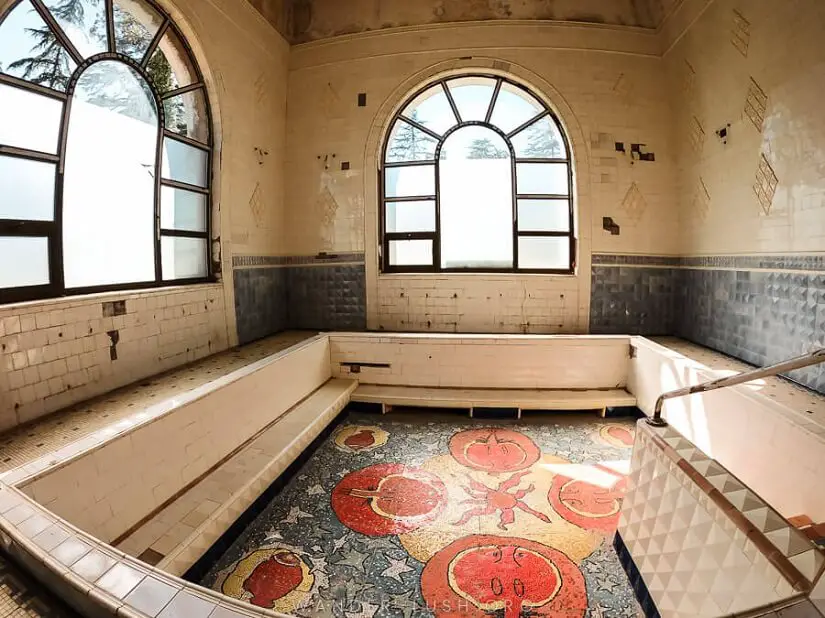
In Soviet times, it was said that anyone who served the state well would not be rewarded with a free pass to heaven, but rather an eternity in the Republic of Georgia. The mountainous landscape, mild climate and prevalence of natural mineral water and sulfur springs made Georgia a desirable destination for summer holidays, thus sanatoria and health retreats were erected everywhere. The most popular of them all was Tskaltubo, a spa town 20 minutes outside of Kutaisi.
At its peak of popularity, Tskaltubo was serviced by direct trains from Moscow. Stalin himself had a private room at one of the many bathhouses here. The town fell into ruin after the collapse of the USSR and in the 1990s, families displaced from the war in Abkhazia were resettled in some of the larger buildings. Many people still live here, so when visiting Tskaltubo, it’s important to show respect and be mindful of people’s privacy.
Semi-abandoned but still with many functioning spas, Tskaltubo is a magnet for urbexers and photographers. Although stripped of anything of value, the delightfully dilapidated multi-story sanatoria are a joy to explore – many still have their old ceiling moulding, tiles, and other design flourishes. Stalin’s mosaic-clad private bath is located inside an operating bathhouse inside the park – ask politely at the reception desk and staff will let you in for a peek.
Tskaltubo is very easy to visit from Kutaisi by marshrtuka van. The area is open and accessible 24/7, but it’s recommended to go during daylight hours when there are plenty of people around.
Explored by Emily from Wander-Lush
Stalin Museum, Gori, Georgia
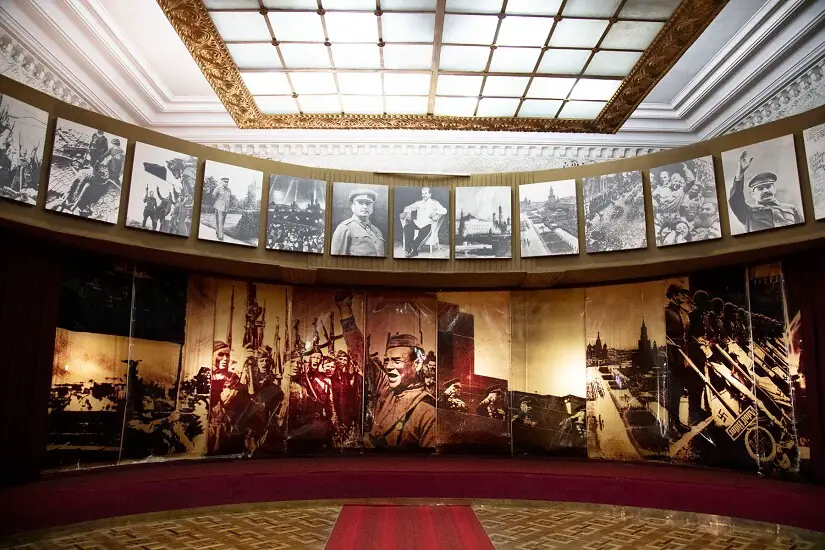
Located in Gori, about 80 kilometers northwest of Tbilisi, is the Stalin Museum. Why Gori? Stalin was born there as Ioseb Besarionis dzе Jughashvili in 1878. The museum, established in 1957, four years after his death, recounts his life from his humble beginnings to becoming the Russian Supreme Leader.
As the most famous person to come from Georgia, and rise into such power, the museum really showcases his role in World War II where he is credited as saving the world from Adolf Hitler when he defeated him in his role as Commander in Chief of the Red Army.
Wandering around the museum is a bit surreal. Where is the other side of the story? The part where he was a ruthless leader sending countless thousands to Gulags and the other atrocities that he committed? In all of the huge exhibition halls, not one of them speaks to the darker side of Josef Stalin.
The museum has many interesting parts, though. There are two outside exhibits. One is his childhood and birth home. A small wooden structure protected by a pavilion, Stalin’s father built the cabin. He raised his family on one side while he ran his business of being a cobbler on the other. Also on the property is Stalin’s railway car. An armor-plated green carriage, it took him to the famous Yalta and Tehran conferences.
If you are traveling around Georgia, stop in the Stalin Museum. It is a great example of propaganda, and we can always learn a few lessons from seeing others points of view.
Explored by by Corinne Vail of Reflections Enroute
Red tourism and communism in Russia
The Seven Sisters, Moscow, Russia
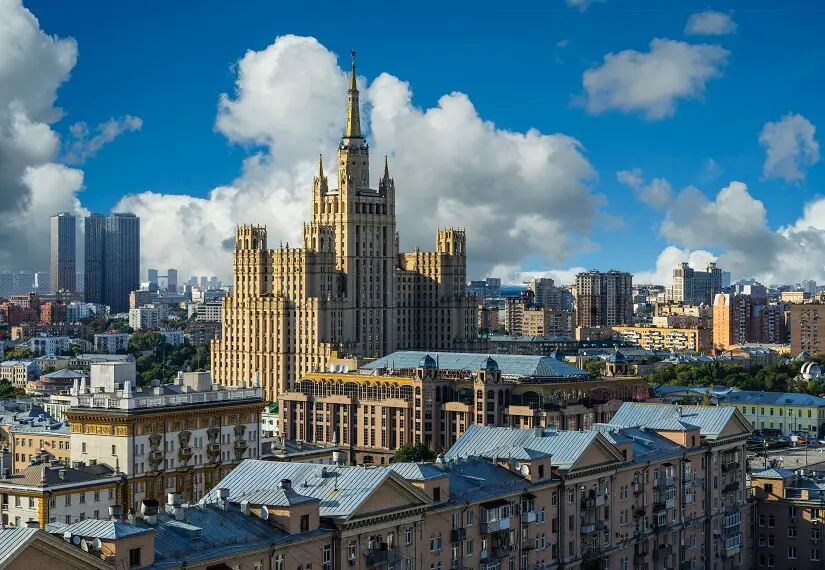
The Seven Sisters is the name given to seven distinctive skyscrapers in the center of the Russian capital Moscow, built by order of Josef Stalin in the last years of his rule from 1947 to 1957. In Russian usage, the Seven Sisters are primarily referred to simply as the “Stalin Skyscrapers.”
The architecture is classified as Socialist Classicism. The foundation stone for the first of the seven skyscrapers was laid in 1947 during the celebrations of the 800th birthday of the city of Moscow.
The Seven Sisters include the Central Campus of Lomonosov University, the building of the Ministry of Foreign Affairs, the Hotel Ukraine (for a long time the tallest hotel in Europe), the residential building on Kotelnicheskaya Embankment, the House at the Red Gate, the Hotel Leningradskaya and the residential building on Kudrinskaya Square.
A visit to at least one sister is one of the recommended things to do in Moscow . Especially the Sperrling Hills with the campus of the Lomonosov University offer a great view of the Moscow city center and the Lushniki Stadium.
An eighth building was planned but never built. Skyscrapers modeled after the Seven Sisters were built in some Eastern European capitals in the 1950s. The buildings in Warsaw, Riga, Prague and Bucharest are particularly well known.
Explored by Phil from JOURNICATION Travel Blog
Bunker-42, Moscow, Russia
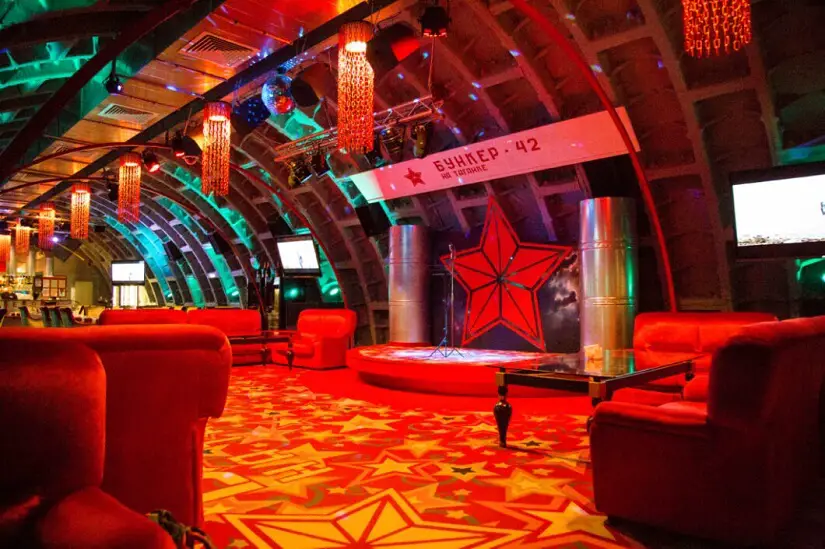
If you are not carefully looking for Bunker-42 in Moscow, you would easily miss its nondescript green doors. However, this was the point of Bunker-42 – to blend in and be indistinguishable from the apartment buildings surrounding it.
Joseph Stalin had commissioned Bunker-42 to be built in response to the United States creating a nuclear bomb. It is 65 meters underground, which was the ideal depth meant to protect Stalin and the top Russian government officials from a possible nuclear attack.
Fortunately, it was never needed for this purpose. And now, it’s a museum dedicated to the Cold War that you can tour!
You do need to schedule a tour in order to enter the museum portion of Bunker-42. There are few English tours you can book throughout the day.
However, if you would rather not do a tour, you do have the option of visiting the restaurant inside Bunker-42. This restaurant doesn’t have the best food in Moscow. But it is worth visiting for a drink or two. How often do you get the chance to have drinks in a once top-secret Soviet bunker?
Bunker-42 is located in the Tagansky district of Moscow and is open 1-11 pm on weekdays, and 12-11 pm on weekends. (Again, be sure to call ahead if you would like an English tour, though.)
Explored by Lindsey Puls of Have Clothes, Will Travel
The Kremlin, Moscov, Russia
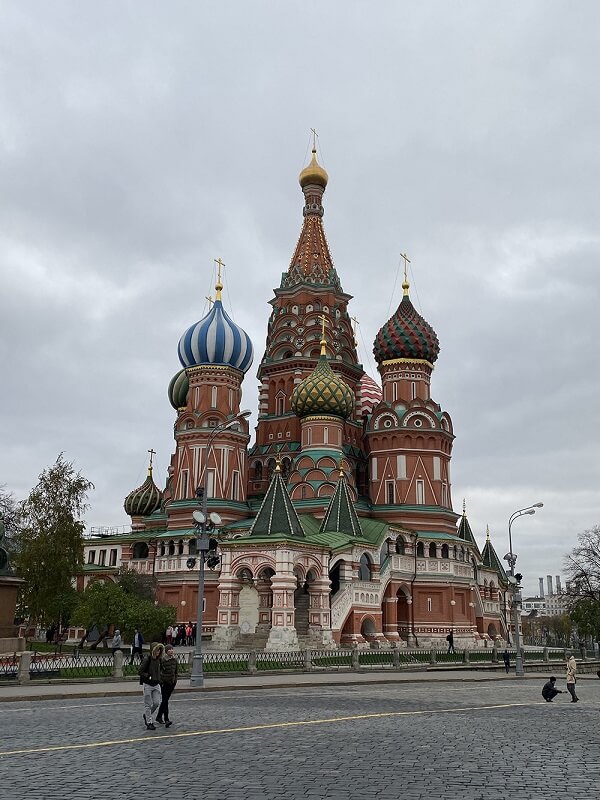
Moscow is undoubtedly one of the most underrated dream places to visit mostly because it is filled with fascinating history and stunning architecture. One of the must-see sites there is the Kremlin, an incredible communism tourism heritage that can easily take half a day to explore.
The Kremlin is located right at the heart of Moscow, in the beautiful historic center. During the USSR, it represented the power of the Soviet government, and today, it is still the official residence of the Russian president (and has been since 1991).
There’s a vast amount of interesting buildings and sites to see inside the Kremlin. Some of the most unmissable ones are the Armoury Chamber and the Diamond Fund, which is home to Russia’s state jewels. The Cathedral of the Annunciation is also a marvelous site; it houses many 14th-century icons and has beautiful sparkly domes.
The Kremlin is open to visitors everyday from 9 am to 5 pm. The best time to visit is after 3 pm on weekdays, where there will be fewer crowds and pretty much no line to enter the complex.
In the eastern walls of the Kremlin, you’ll also find the gorgeous Red Square, which is the perfect place to take a stroll and admire even more beautiful architecture, such as the iconic Saint Basil’s Cathedral.
Explored By Jiayi of The Diary of a Nomad
Metro, Moscow, Russia
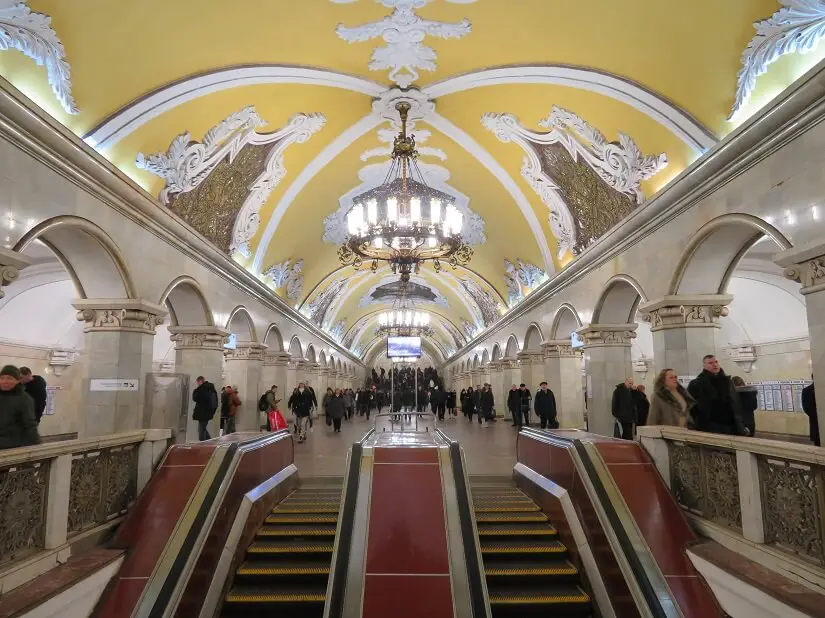
There is no other place in Russia symbolizing the communist era as well as the Moscow Metro. Its myriad of stations tell the story of the development and progress of the Soviet Union. It was to showcase the cultural and technological achievements made possible within the socialist state.
The Moscow Metro was born out of a need to transport labourers in a cheap and efficient way. But Stalin had a bigger vision. The Moscow Metro was to become the palace of the people with extravagant stations full of marble, chandeliers, statues and mosaics. Any visitor had to be in awe of what they saw.
Each station is a unique work of art. It’s easy to be overwhelmed by the visually stunning design of most of them, but the story is in the details. Bas reliefs depicting the most important professions in the Soviet Union, mosaics of historical events and images celebrating the victory in the Great Patriotic war. Communist symbols are everywhere in the Moscow Metro.
Nowadays the Moscow Metro is one of the busiest and most effective subway systems in the world. The good thing is that a Moscow Metro tour is also one of the cheapest things to do in Moscow. All you need is a single metro ticket that costs less than a dollar. As long as you don’t exit a station you can stop as many times as you like and even change in between lines. The most beautiful stations are on the brown line as they were all designed in the Stalinist era.
Explored by Ellis from Backpack Adventures
Lenin Mausoleum, Moscow, Russia
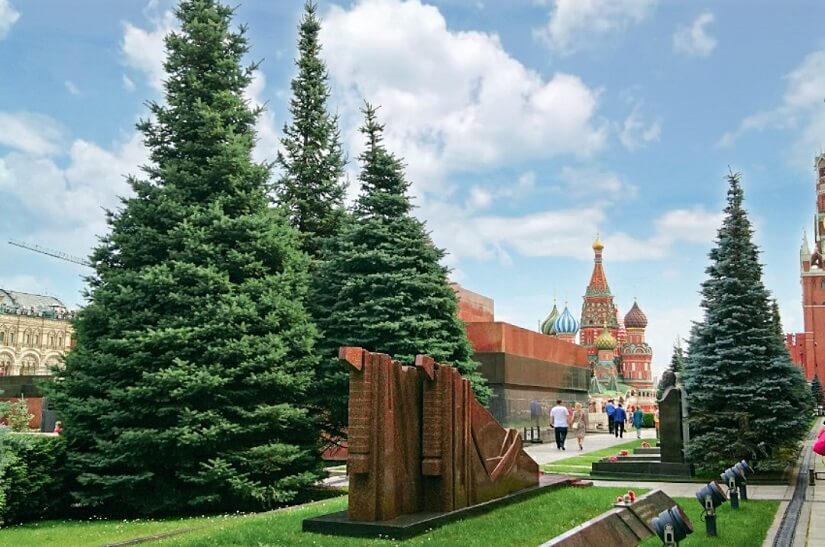
Lenin Mausoleum is one of the TOP attractions in Moscow, Russia. The Mausoleum is located on Red Square, near the Kremlin and St. Basil’s Cathedral. It is the burial chamber of Vladimir Lenin, one of the most known Russian communist politicians.
From the outside, the Mausoleum looks like a red pyramid with a black mourning ribbon on it. Vladimir Lenin passed away in 1924. After the death, his body was embalmed and publicly displayed in the Mausoleum.
Before you get to the Mausoleum, you will pass through the Kremlin Memorial Necropolis. The Kremlin Necropolis is the burial place of the state, party and military leaders of the USSR and the participants of the October Revolution of 1917. Thus, it is also a part of the communist history of Russia.
When you get inside the pyramid, you find yourself in an almost dark room with the sarcophagus in the middle of it. It is transparent and highlighted, and you will see the body of Lenin. Pay attention that taking photos and videos in this room is forbidden.
The Mausoleum has a controversial reputation. Many people believe that it is necessary to close the Mausoleum and to bury Lenin. Others insist that the Mausoleum has already become an inseparable part of the Red Square ensemble.
The Mausoleum opens daily from 10:00 to 13:00, except Mondays and Fridays. There is often a long queue at the entrance. Thus, you better come in the morning. The entrance to the Mausoleum is free.
Explored by Anna de Nord from TravelCultura.com
House of the Soviets, St. Petersburg , Russia
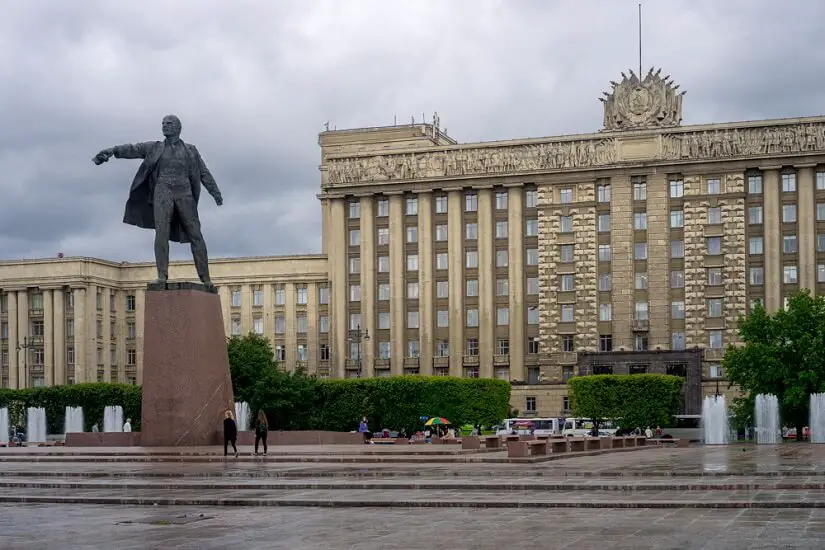
If you’re visiting St. Petersburg and are looking for some soviet nostalgia or want to teleport back to Leningrad, then you should head straight to the House of Soviets.
Also known as the Palace of the Soviets, this enormous building (8 storeys high and housing over 700 offices and 11 conference halls) is the finest example of soviet architecture in the city. The building was constructed as part of a plan to move the central government of Leningrad outside of the city centre, and was constructed just before the Nazis invaded Russia. Due to the Great Patriotic War that broke out shortly after, the building was never used for its planned purpose. After the war, the building was used as a soviet research institute.
Today, you’ll find the House of the Soviets on Moskovskaya Prospect, and it’s one of the best places to visit in St Petersburg to get a glimpse of the city’s soviet heritage.
Visitors are not allowed to enter the building, but from the outside you can see the large emblem of the Russian Soviet Federative Republic on top of the building, as well as typical soviet-styled bass reliefs and on the frieze.
Of course, no communist heritage sight would be complete without a good old Lenin Statue. The imposing Lenin statue, 16 meters tall, in front of the building is the biggest in St Petersburg.
Moskovskaya Square where the building is located is open 24/7, and free to enter.
Explored by De Wet & Jin from Museum of Wander
Red tourism and communism in Cuba
Museo de Playa Girón, Cuba

El Museo de Playa Girón is a small museum located in the seaside town of Playa Girón, Cuba. It’s one of the must do’s when you’re staying in town. It can also be an interesting day trip from either Playa Larga or Cienfuegos.
The museum is more commonly known as the Bay of Pigs Museum and tells the story of the failed invasion in 1961 when exiled Cubans together with the CIA tried to invade and overthrow the Cuban communist government. In a still strongly communist country, you would expect a one-sided or at least heavenly coloured story, but it is surprisingly accurate.
Unfortunately, the museum features only Spanish information. However, it’s possible to hire an English-speaking guide. It’s a small museum, so you’ll only spend about an hour. The huge tanks and the Hawker Sea Fury plane as well as the 15-minute documentary, make it visually attractive though!
Museo de Playa Girón can be visited daily from 8 AM to 5 PM and is located in the centre of Playa Girón. The entrance fee is $2, but there’s an additional (small) fee for the movie and to bring a camera inside.
Explored by Babs from MumsOnFlipFlops
Museo de la Revolución, Havana, Cuba
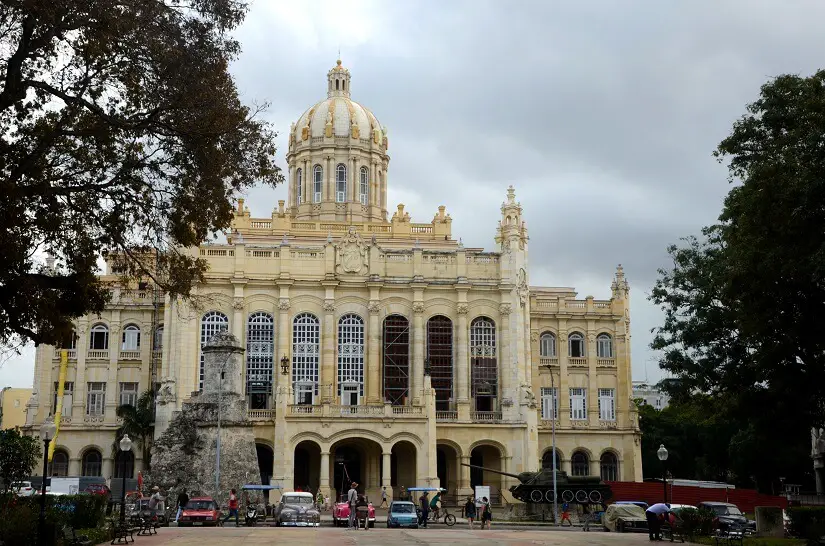
Far away from the lands of Karl Marx and Vladimir Lenin, the Caribbean island nation of Cuba had its first Communist Party in 1965. The party’s founder, Fidel Castro, had earlier led the Cuban Revolution to end the dictator regime of the then President Batista in 1959. Castro went on to become the Prime Minister and later President for several consecutive terms between 1959 and 2008. Following Marxist-Leninist ideologies, he changed the course of history for Cuba. Che Guevara and Camilo Cienfuegos were other important personalities of the Cuban Revolution.
Located in the capital city Havana, Museo de la Revolución, or the Museum of the Revolution houses important artifacts about this Cuban Revolution. Exhibits like handwritten notes by Fidel Castro and military uniform of Che Guevara make the Revolution come alive in the visitor’s imagination. To fuel that thought, you will find details about how and why the revolution started, the timeline of events during the revolution and what it left behind. The museum is open to visitors all days of the week between 9:30 am and 4:00 pm.
If you actively pursue knowledge about communism heritage, Museo de la Revolución should be a must on your Cuba travel itinerary. And here’s what you should expect from a first trip to Cuba.
Explored by Pubali and Indranil from Paradise Catchers
Che Guevara Mausoleum, Santa Clara, Cuba
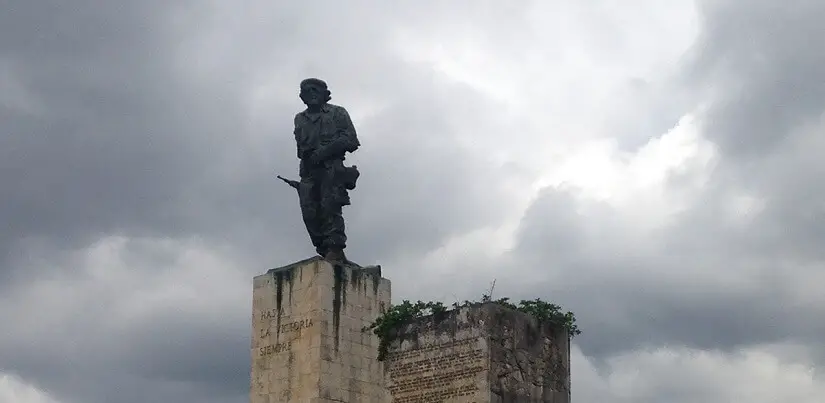
One popular communist tourism heritage site in Cuba that you cannot afford to miss is the Che Guevara Mausoleum. Located in Santa Clara, this monument is one of the most visited in Cuba for those interested in learning more about Che Guevara. For many travelers, this is one of the best things to do in Santa Clara and one of the main reasons people visit Cuba.
You can arrive here direct from Havana and learn all about this marble-made monument which was originally put up in 1988, through the onsite museum. Inside the museum, you can see many precious artifacts that are related to Che’s activities in Bolivia. You’ll also learn how on the 30th anniversary of his death, Che’s remains were returned from Bolivia in 1997.
The great thing about visiting this monument is that on an average day there aren’t hundreds of people queuing like you may be used to at other communist heritage sites. It’s also worth noting that although the mausoleum is constantly open, the museum only opens from 8.30 am to 12.30 pm, and, visitors are forbidden from carrying any personal belongings inside. It would be wise to read up about Che through his autobiography before visiting the Mausoleum so you can fully relate to the exhibits and get the maximum out of the experience.
Explored by Daniel James of Layer Culture
There are many more communist sights around the world and we can learn from each of them, but I feel this list is a good start. You might have noticed that Europe sights are mostly missing from this list, except for the ones in Russia. There are a lot to be seen and learnt by visiting communism related sights in Europe. So many that I decided to dedicate them a separate article in the near future.
Travel With A Spin contains affiliate links. If you make a purchase through these links, I will earn a commission at no extra cost to you. Thanks for reading!
